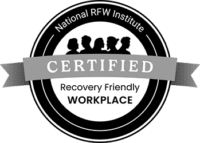Top Strategies for Preventing Preterm Birth
In the United States, about 1 in 10 babies is delivered preterm, before the 37th week of pregnancy has been completed. Babies born prematurely can be affected by adverse health complications such as breathing and feeding challenges, cerebral palsy, delays in development, problems with vision and hearing, and death. The conditions associated with preterm birth can also lead to financial challenges for families from resulting healthcare costs, as well as emotional struggles throughout the course of caring for these babies. However, there are several ways in which healthcare providers can work with women and mothers to reduce the risk of preterm birth both before and throughout pregnancy.
Supporting Maternal Health
One of the ways in which the preterm birth rate can be reduced is by providing healthcare services and education to women prior to them becoming pregnant. Through screening for chronic diseases, promoting a healthy lifestyle, and intervening to address potentially harmful risk factors, healthcare providers can enable women to reach optimal health for their pregnancies. In addition to providing women with the support necessary to manage chronic health conditions, women should be granted resources to help them quit tobacco use and substance abuse prior to pregnancy. One effective strategy is to ensure women have access to quitting assistance; state Medicaid programs will cover the costs of drug therapy and tobacco cessation counseling.
Learn about a smoking cessation program for moms and caregivers »
Identifying At-Risk Women
Certain women are at heightened risk for preterm deliveries. Another strategy to reduce the preterm birth rate is to identify these women and provide them with the treatments they need to safely carry a baby to full term. Women who have experienced prior preterm deliveries can be up to twice as likely as other women to deliver prematurely again. These at-risk women can benefit from medications like 17 alpha-hydroxyprogesterone, known as 17P, which can decrease the preterm birth risk by about 30%. Other medications, like antenatal corticosteroids (ANCS) can reduce the likelihood of common preterm complications in at-risk women’s babies, such as respiratory distress syndrome, intraventricular hemorrhage, necrotizing enterocolitis, and death.
Learn how Personal Concierge is helping moms carry a baby to full term »
Avoiding Nonmedically Indicated Deliveries
Another important factor in reducing the preterm birth rate is in healthcare providers avoiding nonmedically indicated deliveries, particularly when the woman is less than 39 weeks pregnant. Babies born even towards the latter end of the preterm spectrum are more likely to be affected by complications, developmental delays, severe health conditions, and even death than babies born after the 39th full week of pregnancy. Even the last few weeks of pregnancy are critical for organs like the liver, lungs, and brain to develop properly.
1 in 10
Babies are delivered preterm in the United States
Ensuring Access to Contraception
The prevention of unintended pregnancies is also a significant factor in preventing preterm births. Accidental teen pregnancies are 17% more likely to result in preterm babies; more likely to result in a second pregnancy within the next two years; and more likely to result in a second preterm baby than other pregnancies. Education and access to the full scope of contraceptive methods is critical in preventing these pregnancies. Likewise, healthcare providers should be knowledgeable of the level of safety and reimbursements for these different methods.
Targeting by Demographic
Additionally, women can be at different levels of risk for preterm birth depending on certain demographic factors. Black women have the highest infant mortality rate related to preterm births, with almost 50% higher risk than white women. Women living in challenging conditions and facing adversities such as poverty, crime, limited education, lack of employment, and lack of sufficient access to healthcare are more susceptible to extreme stress and preterm birth risks.
Providing women with the resources they need by way of initiatives like GoMo Health’s Personal Concierge programs can directly reach at-risk women. By facilitating greater communication between healthcare providers and patients, women can more easily access the resources, education, and emotional support they need to lessen the likelihood of preterm delivery, as well as instantly provide updates on their pregnancies and health concerns that can be quickly escalated to care teams when necessary.
Learn how Personal Concierge could work for you
Contact us today to discuss how Personal Concierge can be used to positively impact preterm birth.







Find Us Online